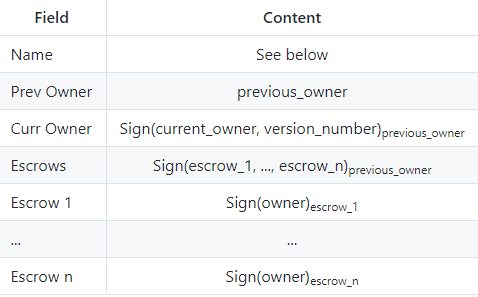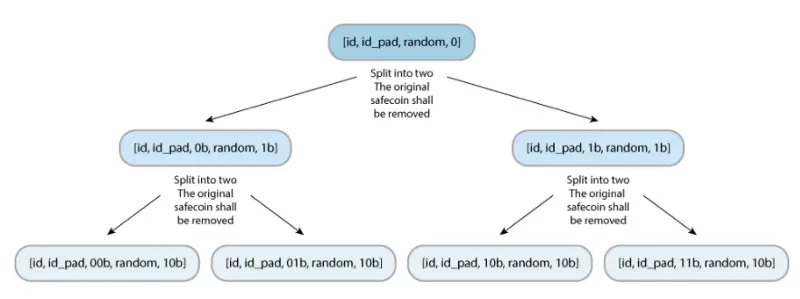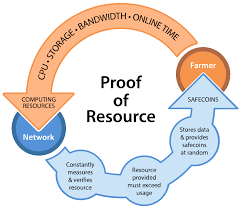Zzz’ Blockchain is Boring — The One and Only Truly Unique Cryptocurrency Is On Its Way
When I say “Blockchain is BORING” I’m being a little bit cheeky and purposely inflammatory.

When I say “Blockchain is BORING” I’m being a little bit cheeky and purposely inflammatory.
Here is what I really mean.
We get it.
Blockchains.
Distributed, decentralized, fancy open ledgers. Awesome, right?
But there are literally tens of thousands of people already working on or in block tech. Seriously, just look at the number of blockchain-based cryptocurrencies; the list is over 1000 and continues to grow.
The who’s who in tech are already either working on the block or they’re learning about it as we speak and will likely be working in or around something to do with blockchain within the next decade.
Schools are teaching blockchain, there are free and paid courses online and universities like Edinburgh, Berkley, Princeton, MIT, and more are adding blockchain to their list of courses or as you’ll see below some are even building their own.
The only people who don’t already know don’t really matter.
So believe me when I say, we got it covered. Muh-blockchain is covered, it’s being worked on, being taught, and being developed RIGHT NOW and well into the future by very smart people.
Now that we got that out of the way let’s learn something new.
But wait, before I go on. I said truly unique in the beginning and I must confess something.
There are other unique cryptocurrency technologies that do not rely on the blockchain. I’ll run through them briefly so you don’t accuse me of not being fair and then I’ll explain why in my opinion they are not truly unique - for this article's purpose anyways.
IOTA
It’s an Internet of Things currency backed by a unique blockless ledger they call The Tangle (apparently no relation to the Tardis from Doctor Who).
The Tangle works based on the principles of DAG (Directed Acyclic Graph) which is just a nerdy way of saying that it’s a super advanced way to structure data, so advanced no one has written an “Explain Like I’m Five” for it yet.
DAG is used primarily by computer scientists and network engineers to tell a computer where to point its data on a network and how that data moves from point to point.
IOTA’s blockless technology is not inhibited by fees because each transaction confirms itself by confirming two previous transactions hence you're only using your own power and internet connection. Effectively that is all you are paying for, confirm your own transaction by confirming two of your buddies (as confusing as that last part is, read it back again, it’ll make you feel warm and fuzzy for some reason).
IOTA also claims there are no scaling issues as we’ve seen with Bitcoin and apparently it is quantum proof but we don’t know that because, well we don’t have a quantum computer to test it with. There is a rumored 2023 release of a such computer.
IOTA’s main goal is to enable autonomous machines to pay and or communicate information with one another.
Think of a not-too-distant future where instead of calling for an Uber you press a button and an autonomous vehicle arrives, you hop in, it talks to your phone, hopefully, your phone is not a rude b**ch, and responds politely, and the trip is complete. The car tells your phone to pay up, done, and at a fraction of the cost. Or another example would be your fridge ordering ice-cold beer from the store when it senses you’re low and this way you can blame your fridge when your wife says you drink too much, comprende?
One current operational use case that uses IOTA is the Ruuvitag. A tiny open-sourced sensor beacon that you can buy online which will tell you the temperature, humidity, and air pressure as well as letting tinkerers configure and program it themselves. Did I mention it was cheap?
IOTA has recently teamed up with Cisco, Volkswagon, Microsoft, and others.
Byteball
Is another DAG-based cryptocurrency… and this is the part where I don’t feel like explaining anymore because by now you get it. But I’ll do so anyway cos that’s just the kinda guy I am.
To be fair Byteball is a decentralized storage and value transfer system. In other words, it’s to be used for setting and completing smart contracts and transferring currency.
Some examples of use cases are:
Risk-free conditional payments where you can set a condition for when you pay someone and if that condition is not met you get your money back. Kinda an escrow service.
Insurance, for example, your flight is delayed so you essentially no longer have to fulfill the contract which could be as simple as not paying the full fee.
Betting, which would technically be a kind of conditional payment if I have that correct.
P2P payments so on and so forth.
The thing I like about Byteball is it has a no-frills look and feel to it yet the technology seems to operate as it should from everything I have read.
Byteball like IOTA also claims to be scalable and for slightly different reasons but again like I said above we’ll have to wait for this one out to see.
Hcash
A little more unique and kind of cool if I am perfectly honest because it is both blockchain-capable and DAG capable. They’re calling this combination cryptocurrency a “dual side chain”.
Hcash was developed alongside research partners Monash University Melbourne (represent), Shanghai Jiao Tong University, and the Hong Kong Polytechnic University.
Hcash seems to me to have an obsession with hybridity because not only is it a dual side chain but it also uses two consensus mechanisms (PoW and PoS).
Privacy and anonymity are also a pillar of Hcash saying it will achieve bi-directional encryption by way of Zero Knowledge Proof Technology (zk-SNARKs).
Hcash has a lot of money and research pouring into it and is one to definitely watch.
Others
There are other notable and not-so-notable ones that are worth a mention.
RaiBlocks uses something called a “block lattice”.
Dagcoin is built on top of Byteball, another DAG currency.
Crackcoin claims to use cross-verified transactions on a lean graph. I’ve found no evidence to support this claim thus far, sorry crack heads.
As you can see the unique currencies described above are already beginning to flood out of the gates and flatter one another if you get my drift hence in my own perfectly humble opinion they’re already not unique.
Of the ones above I personally like both IOTA and Hcash but, to be honest, I have my doubts about their ability to scale and the way that they store data.
It’s nothing concrete because I am honestly just a layman, so it’s just a gut instinct. I do sincerely wish them all the very best because I think they’re doing great things and I think we’ll see more DAG and hybrid systems of currency and technology being released in the very near future.
Finally, the one and only truly unique Cryptocurrency (IMO) will be…
SafeCoin.
This should come as no surprise to you if you read my last article where I admitted I was an evangelist for the autonomous data network called SAFE.
A future replacement for the current intermediary MaidSafeCoin (MAID) which is currently a Bitcoin derivative served by Omni.
SafeCoin is the token mechanism used by the autonomous internet network called SAFE network. Developed by team Maidsafe in Scotland.
SafeCoins act to incentivize network resources such as storage capacity.
This incentive model is called farming, akin to Bitcoins mining only no specialized hardware or knowledge is required. Farming the network in return for SafeCoin will be possible on desktop computers, laptops, tablets, phones, and single board or single purpose computers.
Generally speaking, SafeCoin can be described as the oil within the engine that is the SAFE network. Core and app developers can be rewarded in SafeCoins which creates a growing ecosystem in contrast to any other network.
SAFE, unlike the current blockchain, DAG or dual systems will use unique identifiers for SafeCoins, essentially Maidsafe is designing the autonomous management system to treat SafeCoins like a unique bit of data. The approach is simple yet complex (there’s that warm and fuzzy feeling again).
This unique identification system is what can be described as unique token-type data and is illustrated as follows in the two images and quotes that I pinched from Maidsafes Git below.

The name of a safecoin is 64 bytes long to allow it to be a network-addressable object. However, the name has a particular format:
[ 32 bits: Token ID | 224 bits: ID padding | x bits (x <= 248): Subdivision bits | 248 — x: Random | 8 bits: Value of x ]
The initial part (Token ID) inherently limits the total number of tokens available to 2³² since each token must have a unique ID.
The second part (ID padding) must be predictable (e.g. it could just be all ‘0’s, or it could be the ID concatenated 7 times). Its purpose is to force all subdivisions of a given coin token the same trusted group of vaults to eliminate the need for network traffic when handling such subdivisions.
The third part defines the subdivision name. For example, if x == 1 (regardless of whether the value of that bit is 0 or 1) then that token represents a half of the original token.
The fourth part is random padding.
The fifth part indicates the level of subdivision of the original token, i.e. it contains the value of x.
This format allows the tokens to be split into 2248 parts if required. The splitting process will only allow the token (or subdivided token) to be bisected, so e.g. quartering a token would need to be done in 2 steps. When splitting a token, only the name changes; all other parts are copied to the new subdivisions. The split results in 2 tokens, each representing a half of the original token value. This procedure is further illustrated in the following diagram.

SafeCoins can be generated, used, binned, recycled, and re-generated all over again.
Unlike other cryptocurrency technologies, the SAFE network will use something called Proof of Resource to validate nodes. The resource in question is CPU speed, bandwidth, disk space, and up-time among others.

How does SAFE achieve consensus though? Through small close groups. This close group is a fraction of the overall network size. Close groups are defined by XOR distance and managed by client managers utilizing vault IDs. All of this enables security, and speed and allows the network to remain completely distributed.
If like me your tech-savvy level is a cross between an armchair philosopher and a jolly pudding-eating type lemme give you the nutshell version of the above gobbledygook. SafeCoins behave like encrypted messages.
The other key thing about SafeCoin is that it regulates the amount of storage and capacity on the network — so when storage levels go below a certain threshold the farming rate (likelihood of getting paid for delivering a chunk to the network in response to a request) goes up. When there is plenty of space it goes down.
To summarize
What I absolutely LOVE 😍 most about SafeCoin is it has a real tangible use case. It can be used as immediately as this new beast of a network goes live. There’s no waiting for anything, no autonomous vehicles, no open-sourced gadgets, and nothing like that.
Once the network is live or should I say alive that’s it. It’s there to be used, traded, generated, and used for uploads, downloads, applications, development, storage, and payments. Basically all of the things we already do on the current crummy internet but instead — on the new autonomous Internet.
To learn more head on over to SAFE Network, read, and play along in their test nets.
Adios muchachos.
Want to know how you can support Crypto Fireside?
Sign up below. It's free and easy 🔥.

